Growing potted tomatoes year-round – a real strategy |
You can grow tomatoes in an apartment not only in summer, but also in spring, autumn, and even winter. If everything is organized correctly, the plants will thrive, and the harvest will be delicious and fragrant.
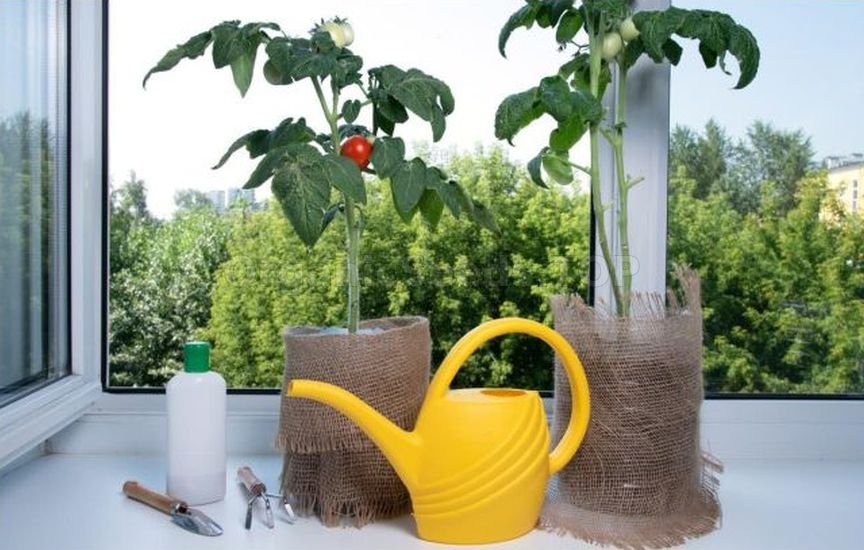 In the garden, tomatoes are annuals because they cannot survive frost. But in an apartment, with proper care, the bushes grow and bear fruit for years without problems. More often, year-round tomato cultivation means sowing and harvesting regardless of the season. And you don't need to open some kind of tomato laboratory with expensive equipment for this — it's enough to consider a few important nuances. Choosing a tomato variety This point determines whether there will be a harvest at all, because not every plant can grow normally and bear fruit on a windowsill or balcony. The best options are determinate and superdeterminate cherry tomatoes. They grow low-growing (average height is 20-40 cm), compact, tolerate a little shade well, and do not need pollinating insects. Tomato varieties and hybrids are standard, with a short and strong stem. Such plants are very decorative and easy to care for. You can also grow tomatoes in hanging pots. To do this, you should pay attention to ampelous varieties with beautiful hanging vines.  In apartment conditions, it is more convenient to grow early and ultra-early tomatoes, with a period from sprouting to technical ripeness of 80–105 days. Choosing containers for planting tomatoes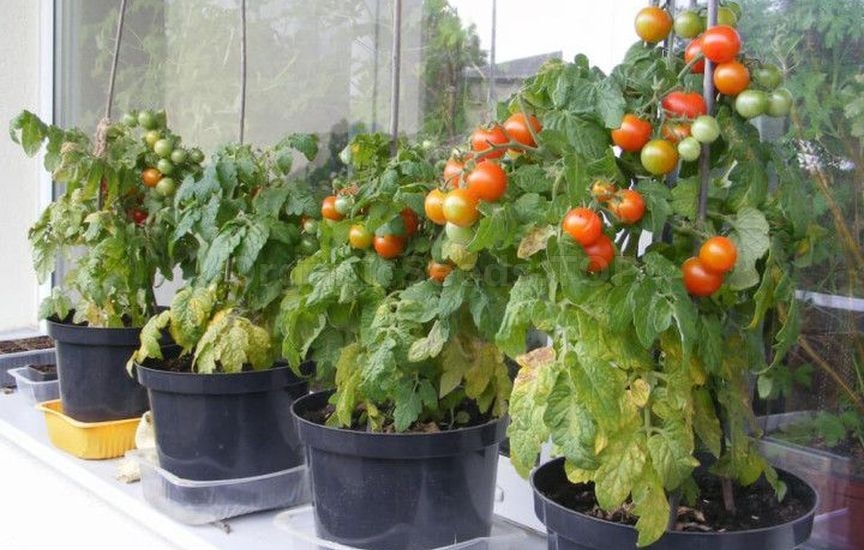 It is better to take larger containers for growing tomatoes so that they can hold enough soil. If the plant is cramped, it will get sick or may even shed its fruits early. However, it is not recommended to plant a small tomato in too large a pot: the bush will have to spend too much energy on developing roots and exploring the entire space. And the growth of the aerial part will slow down during this time, which will affect the fruiting period. The average container volume for one tomato is 6–10 liters. As for the materials from which the containers are made, you should focus on your possibilities. More expensive options: pots made of ceramics, stone, wood, metal. Cheaper – plastic. 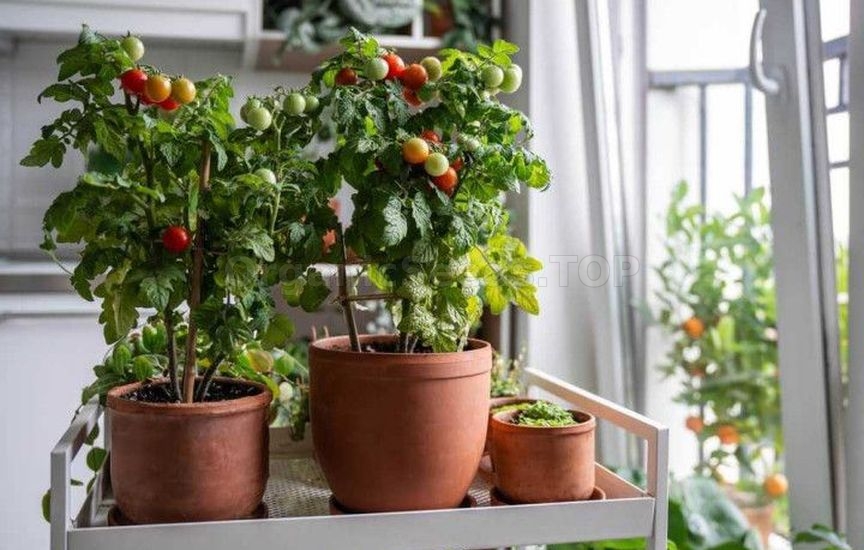 In plastic containers, water evaporates more slowly, so when growing tomatoes, you need to carefully monitor that the soil does not become moldy. Ceramic pots are sometimes quite heavy, and metal ones also heat up in the heat. All this must be taken into account. Containers for growing plants must have drainage holes for water drainage. In plastic pots, they are made manually using an awl. If it is difficult to make holes in the pot, it is better to use it as a decorative planter, and place a smaller container with holes inside. 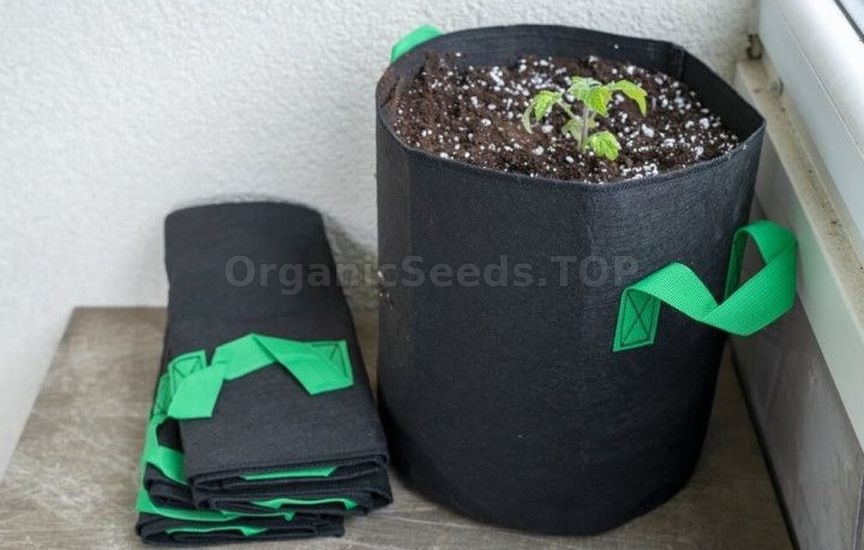 When growing tomatoes year-round on a heated balcony, you can also consider other container options, such as bags, buckets, baskets, etc. Tomato sowing dates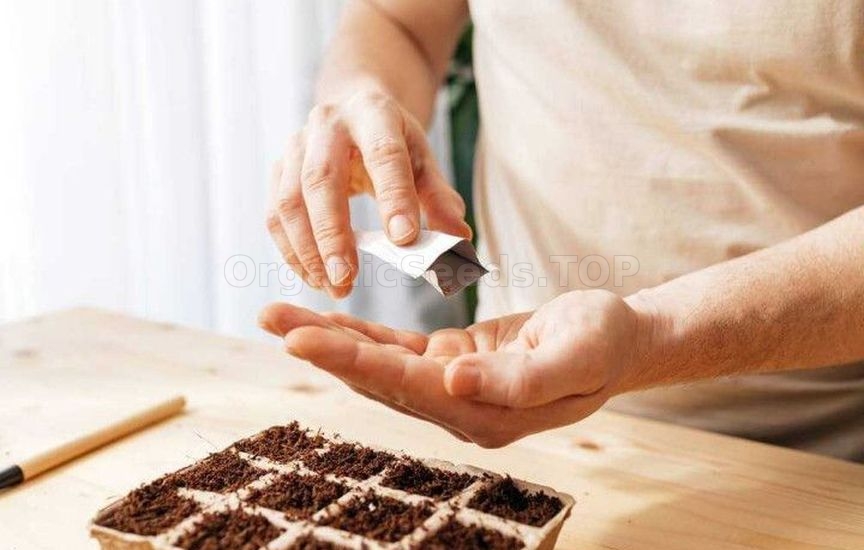 You can start growing indoor tomatoes at any time of the year, provided that you can provide them with warmth and light (see point "Supplemental lighting for potted tomatoes"). How to correctly calculate the sowing dates? For example, to get tomatoes by the New Year's table, sowing of early varieties and hybrids, which begin to bear fruit about 80 days after sprouting, is carried out in early October (you also need to add 5–10 days for germination to the 85 days). At the same time, you should not sow all the seeds from the package at once. Some can be left and sown later. In this way, you can cultivate tomatoes of different ages throughout the year to get a continuous harvest without breaks. But you need to plan in advance whether there will be enough space for all the plants. Growing seedlings of potted tomatoes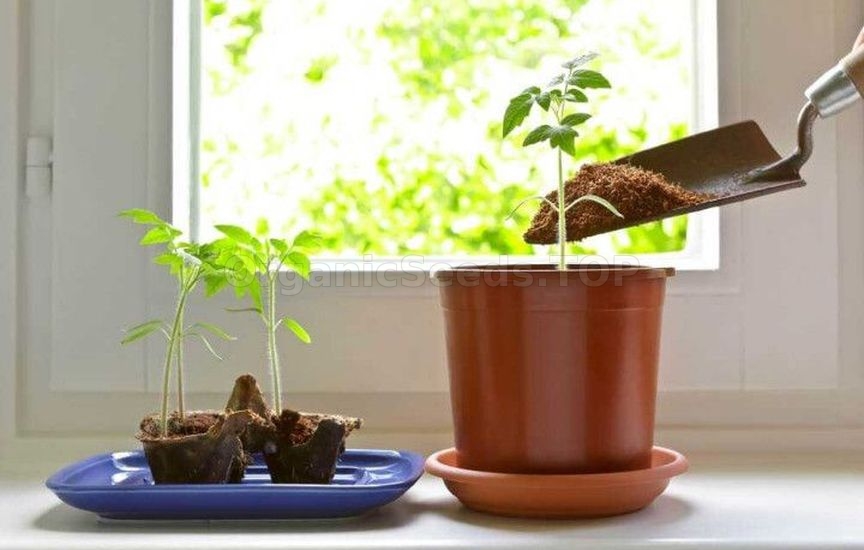 Before sowing tomatoes, you need to do the following: Prepare a soil mixture. You can use, for example, the following compositions:
Tomato seeds can also be sown in peat tablets and then transplanted into a suitable substrate as they grow.
Disinfect the soil. If you use garden soil, it should be steamed in a microwave or oven for 15 minutes before sowing, or treated with a biofungicide (for example, Fitosporin-M, etc.) to reduce the risk of root collar rot (blackleg). Disinfect the planting containers. Previously used pots and other containers must be cleaned of soil residues and washed in a solution of a chlorine-containing agent or a pharmacy antiseptic intended for fighting bacteria, viruses, and fungi. Before disinfection, read the instructions for the product to find out the working solution concentration and exposure time. To increase germination, seeds are soaked before sowing in a growth stimulator solution, for example, Epin Extra (2 hours), Zircon (1–2 hours).  Tomato seeds are planted in the soil to a depth of about 1 cm. The distance between seeds in a common container is 2–3 cm. You can also sow directly into separate cups to avoid picking. Then the soil is sprayed from a spray bottle, the container is covered with a film to create a mini greenhouse, and placed in a warm place. It is aired daily, and when seedlings appear – moved to the brightest place or a grow light is used. About two weeks after germination, when the plants develop 2–3 true leaves, tomatoes from the common container are carefully picked, i.e., transplanted into separate pots. 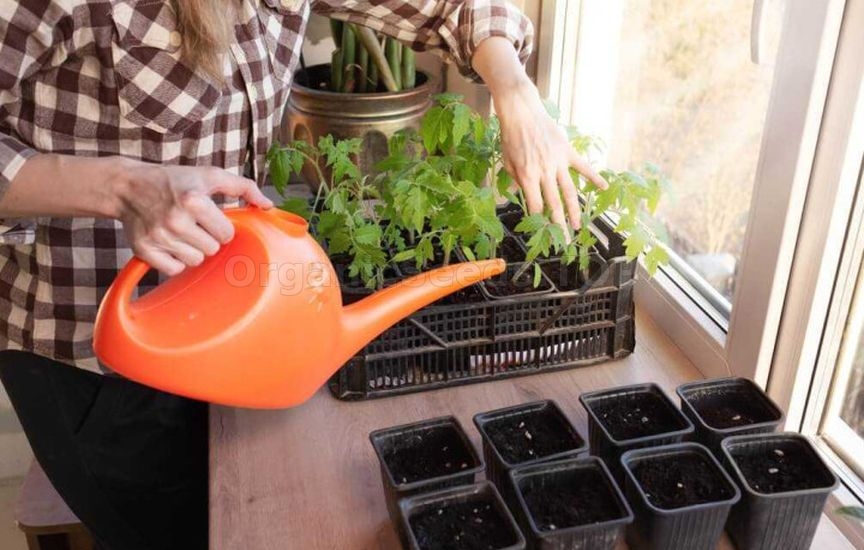 After that, it remains only to regularly water the seedlings, avoiding overwatering and drought, monitor lighting, and prevent sharp temperature fluctuations. Every two weeks, it is useful to apply fertilizers: ready-made mineral fertilizers for seedlings or complex fertilizers. If necessary, the grown seedlings can be transplanted again into larger containers.  Tomatoes are also easy to propagate by cuttings, which will save effort in growing seedlings in the future. To do this, the tops are cut from the bushes so that the cutting is at least 15 cm long and has 3–4 leaves. The lower leaves and buds are removed to direct all the plant's energy to root formation. Afterward, the cuttings can be soaked in a root formation stimulator solution (Kornevin, etc.) and then planted in containers. Or simply dust the base of the cuttings and immediately place the tomatoes in cups with disinfected soil. Placing tomatoes in the apartment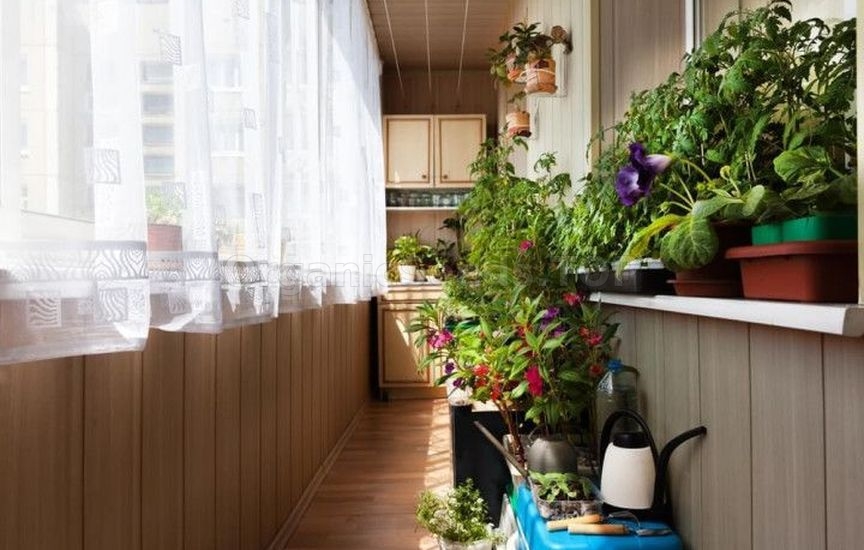 It is best to place tomatoes in the brightest spot: on the south or southwest side of the apartment. This will help prevent the plants from stretching. The air temperature in the room should average 18–25°C, and humidity – 60–70%. 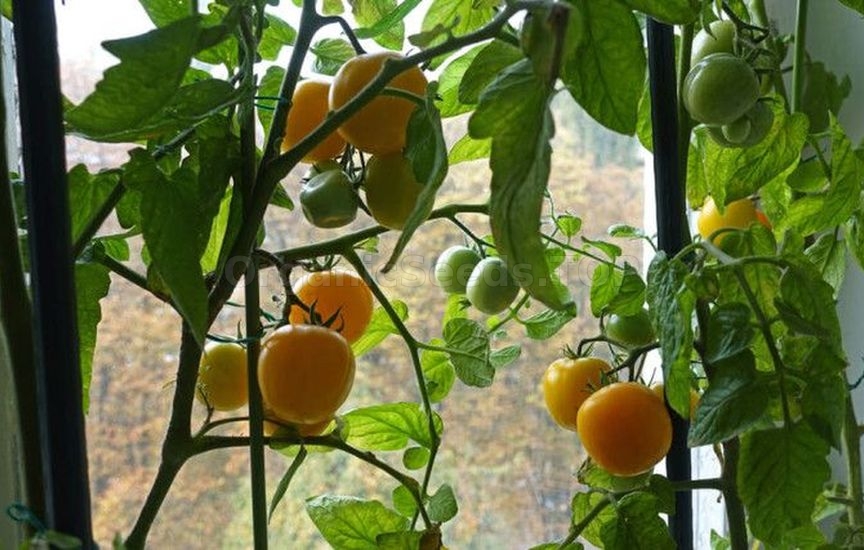 When it gets colder and the daylight hours become shorter, balcony tomatoes should be brought into the apartment or initially covered with non-woven material. If the balcony is heated – excellent! The plants can stay there for the winter. At low temperatures, tomatoes slow down in growth, bear fruit worse, and may even die. With good artificial lighting, pots with tomatoes are better placed inside the room, for example, on a table or shelf. And in winter, this arrangement is even vital because on the windowsill, the plants may freeze after ventilation or prolonged contact with cold glass. Supplemental lighting for potted tomatoes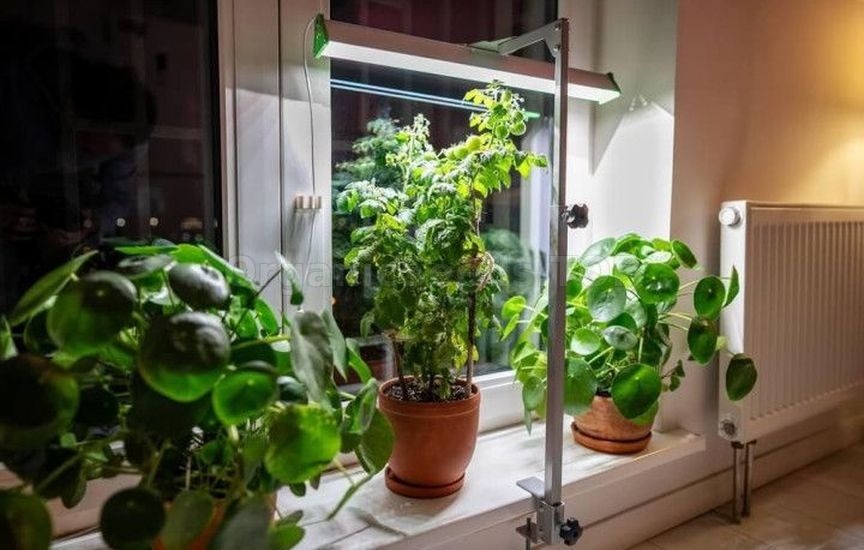 One of the key points for year-round cultivation of potted tomatoes is sufficient lighting. The bushes need at least 10 hours of light per day, so it is useful to purchase phytolamps that emit the light spectra necessary for plants. If this is not possible, tomatoes are placed under regular LED lamps. Reflectors made of foil, penofol, dense white cardboard, or even an ordinary mirror will also help. The material is simply attached to the window slopes. Another option: build a "sunny" box for seedlings. There will be more daylight, and the plants will feel great! Tomato seedlings need full lighting for 12–14 hours a day. Caring for mature tomatoes One of the most common mistakes of novice tomato growers is excessive care for the bushes, when the plants are watered, fertilized, and inspected literally every day. This is not necessary. Potted tomatoes, although more delicate, are quite "independent"; they only need to be watered periodically when the top layer of soil dries out and fertilized about once every 10–14 days. Potted tomatoes usually do not need pinching. Tying should be done if necessary, more often during the fruiting period, so that the stems do not break under the weight of the fruits. Do not spray tomato bushes often, as high humidity negatively affects pollination and fruit set. It is useful to loosen the soil in the pot. It can also be mulched with mature compost or humus. What to feed indoor tomatoes to make them strong and produce tasty crops? Before flowering, you can use ready-made products: Novofert Universal, Agricola for tomatoes, peppers, eggplants, liquid organic fertilizers (Biohumus, Baikal EM1), etc. During flowering and fruiting, the plants' need for phosphorus and potassium increases, as well as for other elements: calcium, magnesium, iron, etc. These can be replenished with preparations such as Fertika Lux, AgroMaster 3:11:38+4, or regular potassium sulfate (1–1.5 g per 1 liter of water). To prevent blossom-end rot, it is advisable to carry out foliar feeding with Brexil Ca fertilizers, which also contain boron, necessary for the rapid movement of calcium through plant tissues. It is recommended to alternate the application of organic and mineral fertilizers, root feeding, and spraying with nutrient solutions. Excess fertilizer negatively affects plant immunity, so it is better to underfeed than overfeed. Preventing diseases and pests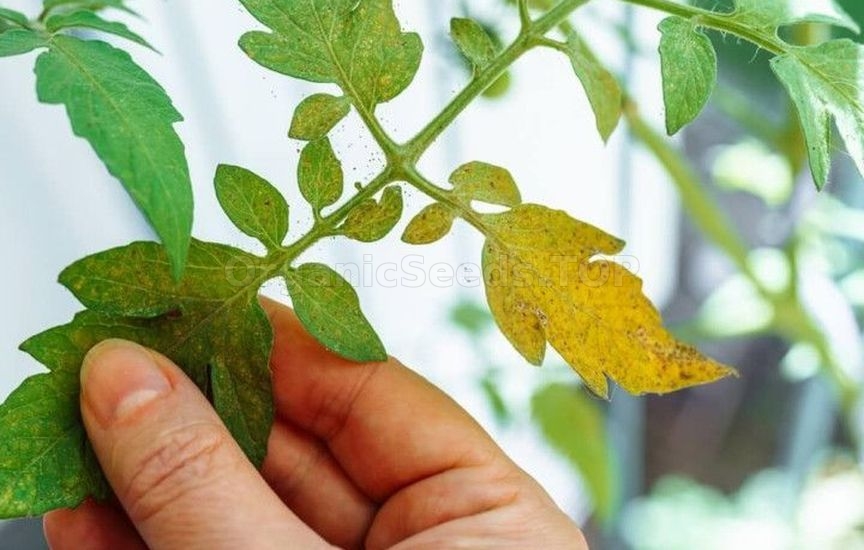 Potted tomatoes rarely get sick or suffer from pest attacks, but this is no reason to completely relax. If the plants are on an open balcony or next to houseplants, do not receive enough nutrition, or are often in a state of overwatering/drought, problems may still arise. For treatment and prevention, it is worth using biological products (for diseases – Fitosporin-M; for pests – Fitoverm, etc.). At the same time, safety measures must be observed to avoid harming your health. You can also use various folk remedies, such as garlic or onion peel infusions. Sick specimens must be isolated. Severely damaged plants are best discarded, and the soil and pot disinfected. To make indoor tomato growing enjoyable, we recommend thoroughly studying the topic and drawing up an approximate plan for growing potted tomatoes specifically for your apartment conditions. Then it only remains to competently put the acquired knowledge into practice! |
|
|
